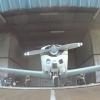Best RPM for Mooney 20 F
-
Members Online
- eman1200
- M20S Driver
- Andy95W
- tankles
- MDMooney
- TCC
- Jetdriver
- camshaft
- Gilt
- Skypunk107
- philiplane
- Bolter
- IFLYIFR
- donkaye
- UteM20F
- hubcap
- Jeff Uphoff
- Hank
- toto
- generalaviationguru
- Rwsavory
- kortopates
- dzeleski
- Mooney-Shiner
- Jake@BevanAviation
- Paul Thomas
- T. Peterson
- ta2too
- Hunter
- Nico1
- Jsno
- fdc7169
- Tx_Aggie
- johnnyr172
- wrr
- peterl
- icurnmedic
- ProtoFly
- pirate
- Yooper Rocketman
- prillayo03
- Speed Brakes
- jetdriven
- raymondscott0321


Recommended Posts
Join the conversation
You can post now and register later. If you have an account, sign in now to post with your account.